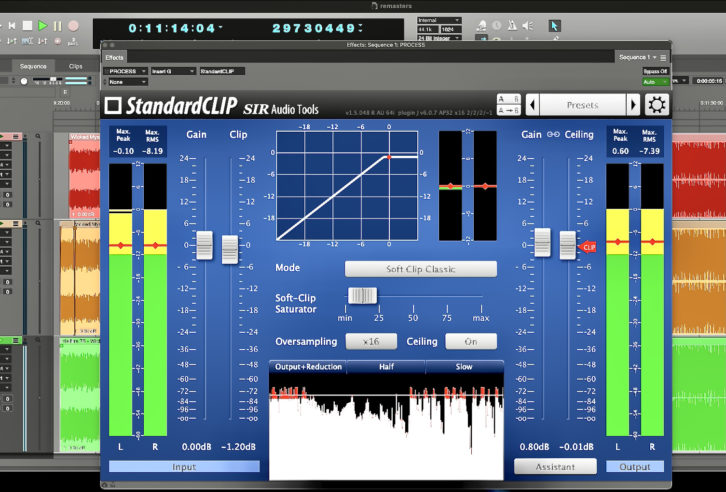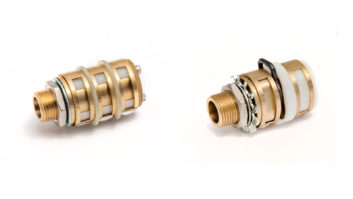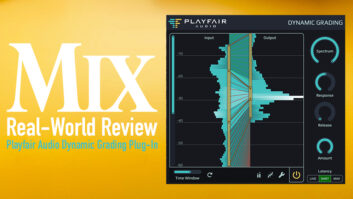
Today’s loud is louder than loud’s ever been, as the volume wars continue in popular music. Mastering engineers shave off pesky level-preventing peaks with finesse and musicality, but mix engineers and their abundant use of saturation have made blazing loud a lot more feasible. But it’s the fine massaging of how those remaining peaks approach zero that has taken master levels into the stratosphere. The StandardCLIP plug-in from SIR Audio Tools is one such level-maximizing tool that uses clipping to get hotter levels with a pleasant tone, absent of the clicking and splatting often associated with poppin’ overs and clipping.
The process starts with a Soft-Clip Saturator that allows smooth, musical clipping to begin at whatever level approaching 0 dBFS that you desire; you also control the severity of that clipping, as well as the type: Soft Clip Classic, Soft Clip Pro and Hard Clip.
Next, an oversampling process can be applied to reduce the distortion resulting from that clipping, caused by new harmonic artifacts from aliasing (the sampling error of high frequencies above the Nyquist frequency). Oversampling finds those errors and removes them, a few more with each pass-thru, up to 256x oversampling in StandardCLIP.
After the oversampling comes a Ceiling parameter that prevents any samples forming over your chosen threshold, typically at, or just under, zero. StandardCLIP includes numerous types of peak and RMS level metering with plenty of visual feedback, my favorite being the red-topped waveform display that shows just where your clipping is taking place.
Sterling SHA4 Headphone Amplifier – A Real-World Review
Baby Audio Smooth Operator – A Real-World Review
It takes a little time to get used to the process, as there are plenty of control parameters and they beg for experimentation, although some presets can help you get started. I got up to speed relatively quickly and soon churned out louder masters where I had gone a little overboard with the soft-clipping. With practice, less severity, and more finesse of thresholds and gain staging, I cleanly upped my master levels game by 1.5 dB and sometimes more.
That’s all useful, but the best part is that the oversampling makes a substantial difference and is a bit more flexible than I expected. The absence of high-frequency distortion grabs you first; there’s a little bit of “sand” in your maxed-out digital audio and you don’t notice it until it’s gone.
At 4x, I heard improvement; at 8x, things got beautiful; at 16x, somehow even cleaner; but at 32x, the sound got so clinical that it was too crisp and perfect for me. At 64x, my Mac Pro couldn’t run in real time and I had to bounce/render to hear the results, but it didn’t sound any better to me and it took so long to bounce that I’m not going back there. In fact, I usually master at 16x and sometimes at 8x for the tone. Go figure.
Considering that StandardCLIP is only $29, works like a charm and makes your masters louder than they were before, it’s a pretty low-risk/ high-payoff purchase. The only thing you have to lose is all those hours spent testing out clip levels, modes and oversampling rates—and that your bounces/renders will now take longer than ever. It’s still worth it!







